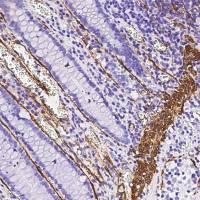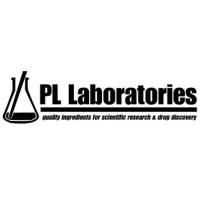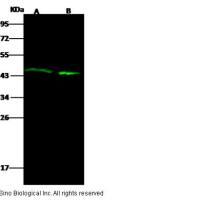Fluorescence Recovery After Photobleaching (FRAP) with a Focus on F‐actin
互联网
- Abstract
- Table of Contents
- Materials
- Figures
- Literature Cited
Abstract
In this unit on fluorescence recovery after photobleaching (FRAP), an imaging approach to study protein?protein interactions in situ is described. The protocols presented use confocal microscopy to examine the mobility of a fluorescent protein by measuring the recovery of the protein in a bleached area. The data gained in FRAP studies is qualitative and yields insight into relative binding affinity, binding characteristics, and the effect of treatments or mutations on protein mobility. Curr. Protoc. Neurosci. 61:2.17.1?2.17.12. © 2012 by John Wiley & Sons, Inc.
Keywords: FRAP; actin; protein mobility; GFP
Table of Contents
- Introduction
- Basic Protocol 1: FRAP Imaging of Fluorescently Tagged Actin in Cells
- Basic Protocol 2: Analysis of the FRAP Time‐Lapse Image Series
- Basic Protocol 3: FRAP of Immobilized Actin
- Basic Protocol 4: Determination of Diffusion‐Coupled or Diffusion‐Uncoupled Recovery
- Reagents and Solutions
- Commentary
- Literature Cited
- Figures
Materials
Basic Protocol 1: FRAP Imaging of Fluorescently Tagged Actin in Cells
Materials
Basic Protocol 2: Analysis of the FRAP Time‐Lapse Image Series
Materials
Basic Protocol 3: FRAP of Immobilized Actin
Materials
|
Figures
-

Figure 2.17.1 Schematic illustrating FRAP. A cell expressing fluorescently tagged protein undergoes high‐power laser photobleaching in a defined region of interest (ROI) in the cell. Recovery from the laser bleach is monitored over time by low‐power laser imaging. Due to imaging there is a reduction in whole‐cell fluorescence concurrent with a recovery of fluorescence in the bleached ROI. View Image -

Figure 2.17.2 Fluorescence recovery curve. The data have been normalized for background reduction in whole‐cell fluorescence and normalized to prebleach fluorescence intensity [ F (−1)]. Immobile and mobile fractions are indicated. F (−1) = prebleach background‐normalized fluorescence in the ROI at t = −1. F (∞) = final recovered fluorescence value in the ROI that is a constant value or plateau (recovery is considered complete at F (∞)). F (0) = fluorescence value at time zero after the bleach. t 0 = the first time point after the bleach. t 1/2 = half‐time of fluorescence recovery, i.e., the time required to reach 50% of final recovered fluorescence. View Image -

Figure 2.17.3 FRAP of protein after immobilization of actin. The fluorescence recovery of an actin‐interacting protein in untreated control (black line), after 1 µM jasplakinolide treatment (JS, dark gray line), and after 10 µg/ml cytochalasin D treatment (CD, light gray line) is shown. Reprinted with permission from Lin and Redmond; © 2008 National Academy of Sciences, U.S.A View Image
Videos
Literature Cited
| Literature Cited | |
| Bubb, M.R., Senderowicz, A.M., Sausville, E.A., Duncan, K.L., and Korn, E.D. 1994. Jasplakinolide, a cytotoxic natural product, induces actin polymerization and competitively inhibits the binding of phalloidin to F‐actin. J. Biol. Chem. 269:14869‐14871. | |
| Campbell, J.J. and Knight, M.M. 2007. An improved confocal FRAP technique for the measurement of long‐term actin dynamics in individual stress fibers. Microsc. Res. Tech. 70:1034‐1040. | |
| Jacobson, K. and Wojcieszyn, J. 1984. The translational mobility of substances within the cytoplasmic matrix. Proc. Natl. Acad. Sci. U.S.A. 81:6747‐6751. | |
| Jönsson, P., Jonsson, M.P., Tegenfeldt, J.O., and Höök, F. 2008. A method improving the accuracy of fluorescence recovery after photobleaching analysis. Biophys. J. 95:5334‐5348. | |
| Kang, M., Day, C.A., DiBenedetto, E., and Kenworthy, A.K. 2010. A quantitative approach to analyze binding diffusion kinetics by confocal FRAP. Biophys. J. 99:2737‐2747. | |
| Lin, Y‐C. and Redmond, L. 2008. CaMKIIβ binding to stable F‐actin in vivo regulates F‐actin filament stability. Proc. Natl. Acad. Sci. U.S.A. 105:15791‐15796. | |
| Lober, R.M., Pereira, M.A., and Lambert, N.A. 2006. Rapid activation of inwardly rectifying potassium channels by immobile G‐protein‐coupled receptors. J. Neurosci. 26:12602‐12608. | |
| McNeil, P.L. 2003. Direct introduction of molecules into cells. Curr. Protoc. Cell Biol. 18:20.1.1‐20.1.7. | |
| Peters, R., Brunger, A., and Schulten, K. 1981. Continuous fluorescence microphotolysis: A sensitive method for study of diffusion processes in single cells. Proc. Natl. Acad. Sci. U.S.A. 78:962‐966. | |
| Reits, E.A.J., Benham, A.M., Plougastel, B., Neefjes, J., and Trowsdale, J. 1997. Dynamics of proteasome distribution in living cells. EMBO J. 16:6087‐6094. | |
| Schliwa, M. 1982. Action of cytochalasin D on cytoskeletal networks. J. Cell Biol. 92:79‐91. | |
| Sprague, B.L., Pego, R.L., Stavreva, D.A., and McNally, J.G. 2004. Analysis of binding reactions by fluorescence recovery after photobleaching. Biophys. J. 86:3473‐3495. | |
| Star, E.N., Kwiatkowski, D.J., and Murthy, V.N. 2002. Rapid turnover of actin in dendritic spines and its regulation by activity. Nat. Neurosci. 5:239‐246. | |
| Trembecka, D.O., Kuzak, M., and Dobrucki, J.W. 2010. Conditions for using FRAP as a quantitative technique—influence of the bleaching protocol. Cytometry 77:366‐370. | |
| Zacharias, D.A., Violon, J.D., Newton, A.C., and Tsien, R.Y. 2002. Partitioning of lipid‐modified monomeric GFPs into membrane microdomains of live cells. Science 296:913‐916. |









